The alternatives for removing dust and debris from sprinklers now that SprinklerVac is off the market. Plus, how to protect heads from various substances.
Keeping fire sprinklers tidy is an essential but often overlooked maintenance task, complicated by the fact that you can’t touch sprinklers when you clean them. Previously, the SprinklerVac offered the best no-contact option, but the manufacturer has stopped selling it. So, what do you do?
Here’s an overview of the alternatives and NFPA rules for cleaning fire sprinklers — and protecting them from coatings that can’t be removed:
- Why can’t you touch sprinklers? And what happened to the SprinklerVac?
- The current options for cleaning “loaded” fire sprinklers
- How to prevent heavy loading, grease, paint, and other substances that demand sprinkler replacement
Why can’t you touch sprinklers? And what happened to the SprinklerVac?
This SprinklerVac was invented by a safety programs expert who saw the need for a touchless cleaning tool to achieve NFPA compliance.
NFPA 25: Standard for the Inspection, Testing, and Maintenance of Water-Based Fire Protection Systems requires replacing any sprinklers with “Loading detrimental to sprinkler performance.” (2023, section 5.2.1.1.1*). “Loading” means covered in dust, dirt, or grime that can delay sprinkler activation or otherwise impede proper operation. And given how easily that stuff accumulates, you need a way to keep sprinklers clean.
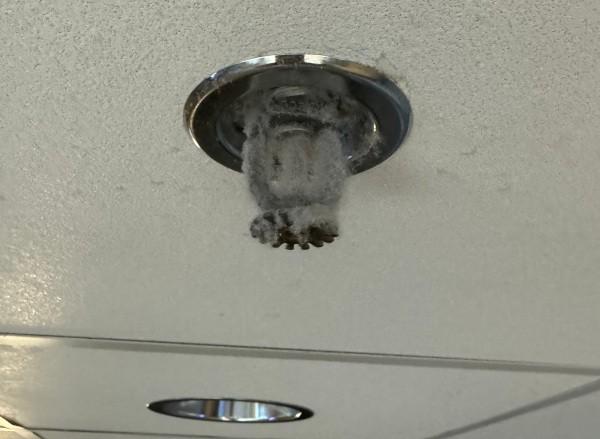
Unfortunately, fire sprinklers are sensitive and can be activated accidentally, which is why NFPA 25 only allows you to clean them if you don’t touch them (emphasis added):
Sprinklers that upon inspection show signs that they will not operate correctly are required to be replaced. However, those with light loading can be cleaned with a vacuum or a blast of compressed air.
The no-contact rule is designed to prevent accidental activations after damaging a sprinkler’s fragile heat-sensitive element, usually a glass bulb.
Among the options, compressed air has some drawbacks and considerations that we’ll cover shortly, so the SprinklerVac provided an excellent alternative. This device attaches to a standard vacuum and enables easy, safe cleaning through its wide diameter and see-through design:
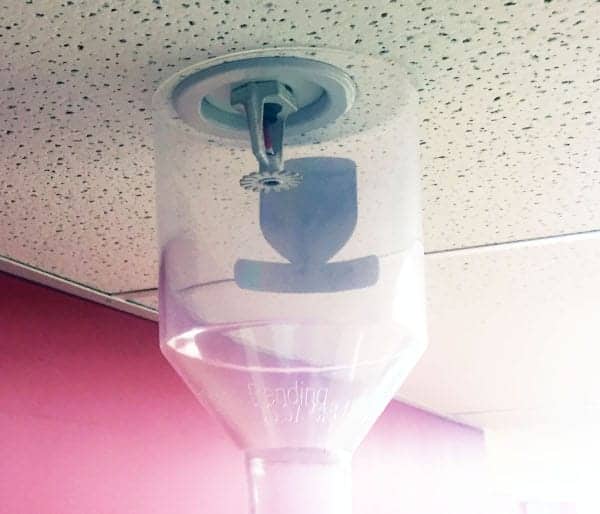
Unfortunately, the SprinklerVac is no longer on the market; the site is offline, and we’ve heard the business is “on hold.” The company holds a patent for this simple yet innovative tool, so the product might only become available if it resumes production or someone purchases the rights.
So, what can you do instead?
The current options for cleaning fire sprinklers
The primary ways to do it remain the same: a vacuum or compressed air.
Cleaning fire sprinklers with a vacuum
SprinklerVac hit the market around 2015, yet NFPA 25 stated people were “permitted to clean sprinklers with compressed air or by a vacuum” in a previous edition (2014 edition: A.5.2.1.1.2(5)). However, the previous 2011 edition stated that “Lightly loaded or corroded sprinklers could be permitted for continued use [only] if samples are selected for testing based on worst-case conditions and the samples successfully pass the tests.” (A.5.2.1.1).
So, using a vacuum currently remains an option as long as “the equipment does not touch the sprinkler.” The SprinklerVac solved a couple of problems with this method by providing a wide, transparent cup that allowed you to create suction while clearly avoiding the head. Most other standard vacuum attachments are opaque and too small to fit around a sprinkler safely.
However, if a vacuum has enough suction to remove dust without an attachment touching the sprinkler’s surface, it might still be a good option.
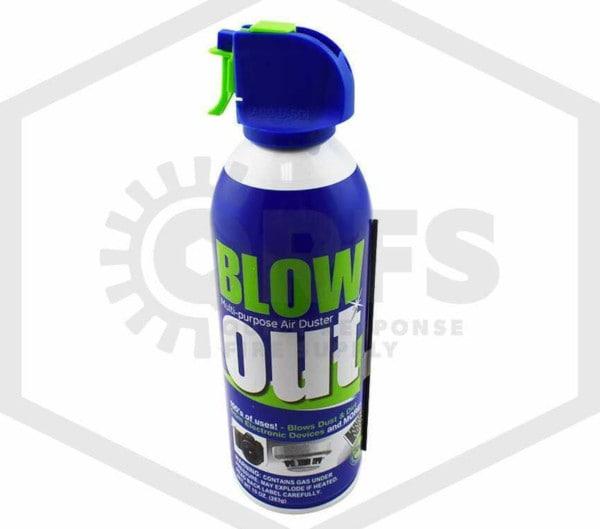
Cleaning fire sprinklers with compressed air
Cans of compressed air are essentially the go-to alternative to the SprinklerVac. They’re inexpensive, easy to buy, and provide touchless cleaning. Standard compressed air cans like these, often used to dust computer keyboards, cameras, smoke detectors, and other equipment, will do the trick.
However, there are a few considerations:
- You’ll often need a ladder to get close enough to use compressed air.
- Don’t spray it so closely that the cold liquid propellant that drives the air hits the sprinkler, especially the fragile glass bulb.
- Similarly, keep enough distance to avoid hitting the sprinkler with the can or an extended nozzle.
Compressed air works well if you use it appropriately, though cleaning many elevated heads in a large fire sprinkler system can take some effort.
However, there are some substances that neither compressed air nor any vacuum can remove. You’ll need to prevent their build-up or application in the first place.
How to prevent heavy loading, grease, paint, and other substances that demand sprinkler replacement
Loading (dirt and dust) can get heavy enough to prevent suction or pressurized air from cleaning fire sprinklers. Similarly, grease from cooking or other sources can coat sprinklers, and paint from construction or remodeling is also a threat.
Any of these thicker substances that are “detrimental to sprinkler performance” — such as coating the temperature-sensitive element or gumming up the deflector or plug assembly — call for replacing the old sprinkler with a new one.
Unfortunately, swapping out a sprinkler is not a cheap or easy process, as it requires paying a fire protection pro to shut off and drain the entire system or a portion of it. The labor expense dwarfs the cost of a new sprinkler (or several).
So, the keyword for avoiding this situation is prevention: avoid getting these substances on sprinklers in the first place. Some simple steps
1. Dust fire sprinklers regularly enough with compressed air or a vacuum to prevent heavy loading.
The interval here varies by the sprinkler type and the environment. For example, concealed sprinklers are likely to acquire way less dust, and certain buildings or sections of them accumulate particles faster.
A reasonable rule of thumb may be to ensure cleaning sprinklers at least once a year in sync with annual inspections. Preventing heavy loading makes it easier (and possible) to clean heads with compressed air or a vacuum.
2. Protect sprinklers if you are painting.
NFPA 25 loosened the rules for paint on sprinklers in the standard’s latest edition, adding the words “detrimental to sprinkler performance.” In past editions, any amount of aftermarket paint anywhere on the head called for replacement. However, many jurisdictions still use older versions of NFPA 25, so an errant bit of paint may get a deficiency tag.
Avoid this situation altogether by protecting sprinklers with paint caps and covers if you are doing any painting!
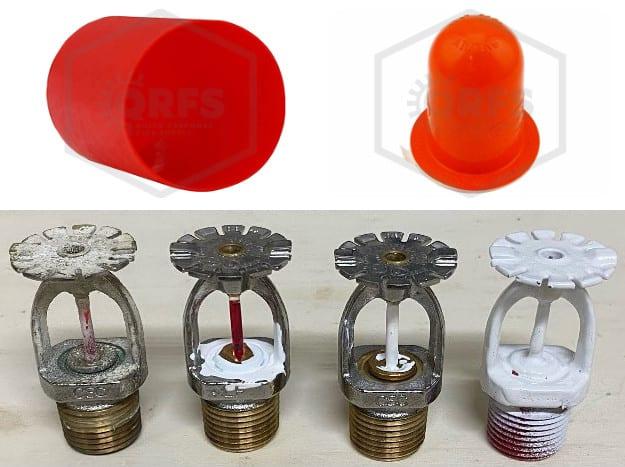
3. Extra protection for sprinklers in certain environments.
Whether it’s a home or a commercial kitchen, having an adequate hood and ventilation system can help prevent sprinklers from getting coated in grease-laden vapors.
In addition, both NFPA 13: Standard for the Installation of Sprinkler Systems and NFPA 33: Standard for Spray Application Using Flammable or Combustible Materials have rules enabling people to protect their heads with coverings in some settings. These sections specifically apply to paint spray areas, paint rooms, paint booths, and “powder coating facilities.” For example:
From the 2022 edition of NFPA 13
16.2.4 Protective Coverings.
16.2.4.1 Sprinklers protecting spray areas and mixing rooms in resin application areas shall be protected against overspray residue so that they will operate in the event of fire.
16.2.4.2* Where protected in accordance with 16.2.4.1, cellophane bags having a thickness of 0.003 in. (0.08 mm) or less or thin paper bags shall be used.
However, again, these rules are explicitly intended for industrial settings like paint booths. Nevertheless, if NFPA committee members have determined that very thin cellophane or paper bags won’t significantly delay sprinkler activation, these coverings might also theoretically be applicable in other settings where paint is a routine threat—subject to the approval of your authority having jurisdiction (AHJ). For example, QRFS communicated with a “paint room experience” operator who was making a case to use these coverings with their local fire inspector.
AHJs have some discretion in assessing a fire protection system and scenarios to determine if “alternative methods” achieve proper fire protection. But never apply any coverings to any in-service sprinkler without explicit authorization from NFPA standards in specific applications or approval from the AHJ.

Keep those sprinklers clean with compressed air or vacuums—and prevention!
We hope the SprinklerVac or a similar tool returns to the market, as it provided a convenient way to remedy mild to moderate loading. However, you still have options for maintaining clean sprinklers:
- Dust regularly and carefully with compressed air or a vacuum
- Avoid getting anything you can’t safely remove on a sprinkler, such as paint or grease
QRFS carries some items to keep fire sprinklers tidy, including:
If you have any questions, contact us at 888-361-6662 or support@qrfs.com.
This blog was originally posted at blog.qrfs.com. If this article helped you, check us out at Facebook.com/QuickResponseFireSupply or on Twitter @QuickResponseFS.


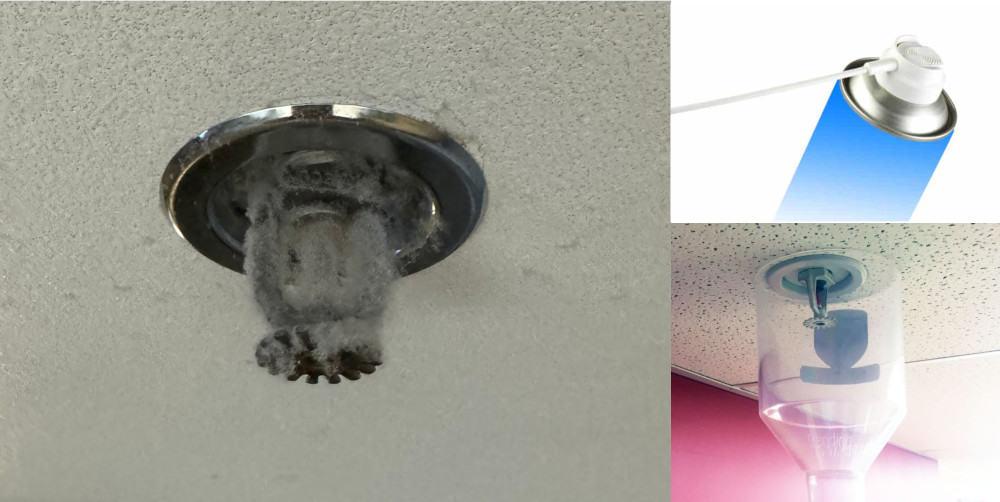
So, no one is supposed to basically wipe
off a Fire sprinkler head with a clean clothe?
Eugene — Correct—most sprinklers have a fragile glass bulb, which opens up significant risk for people to break something and release a ton of water (among other potential damages). Thanks for reading!